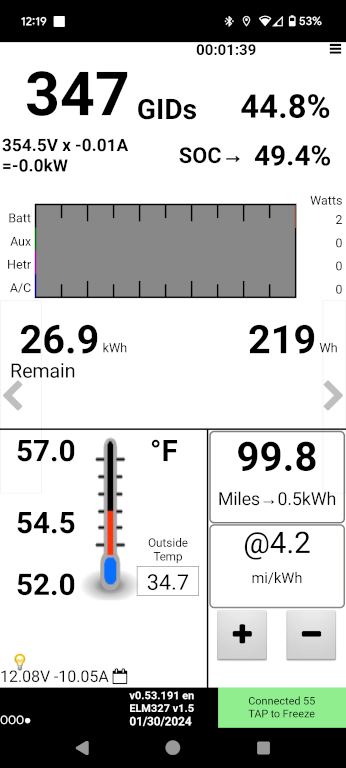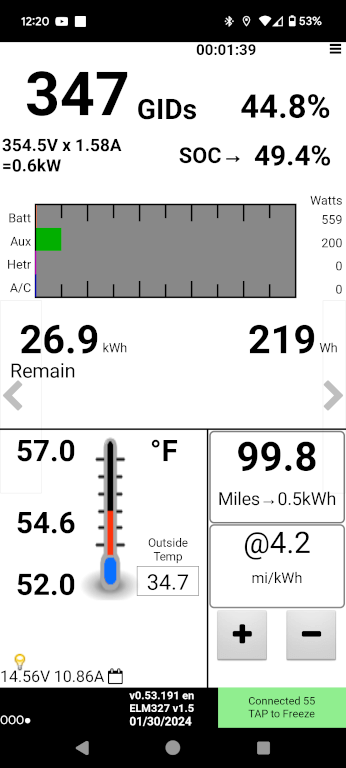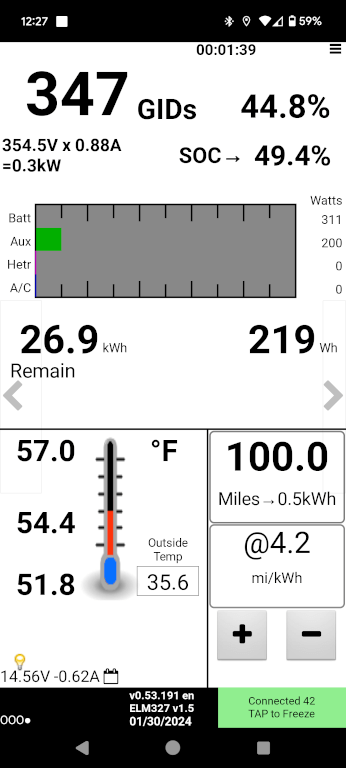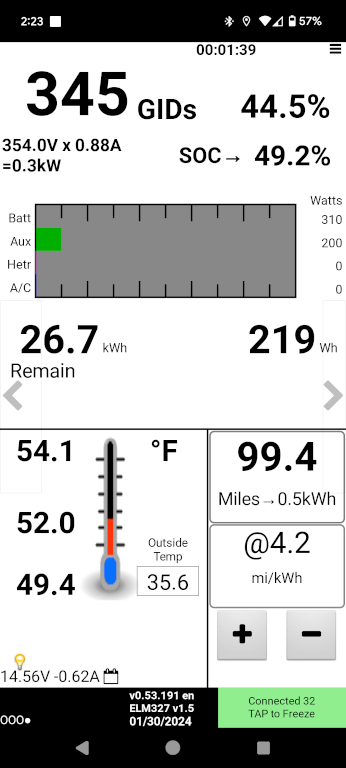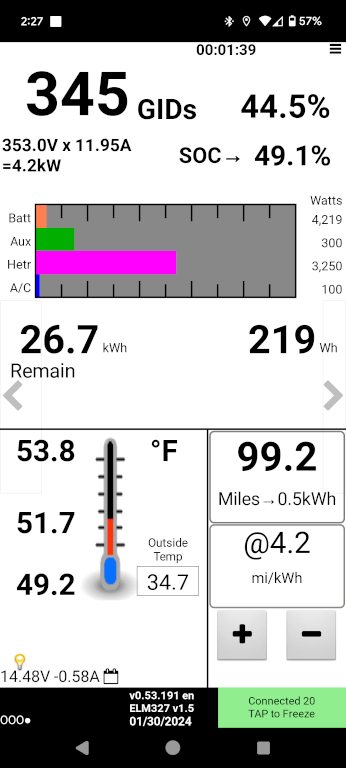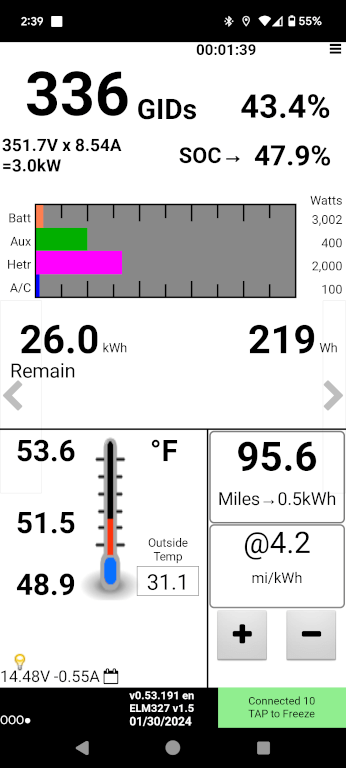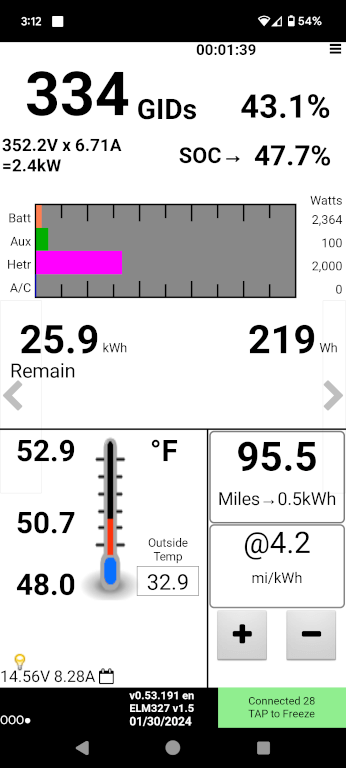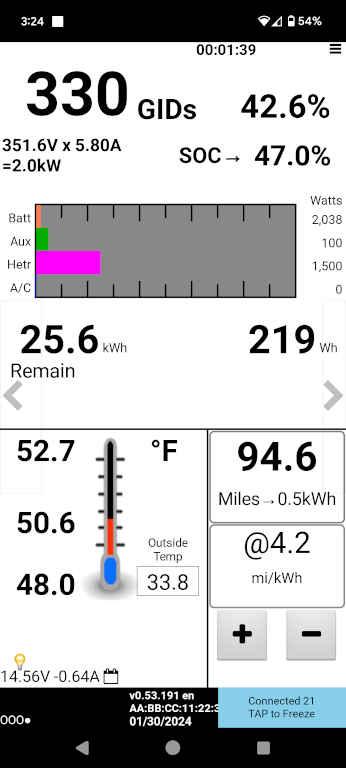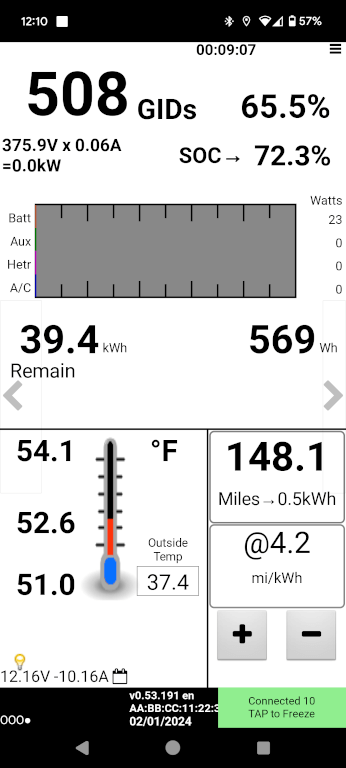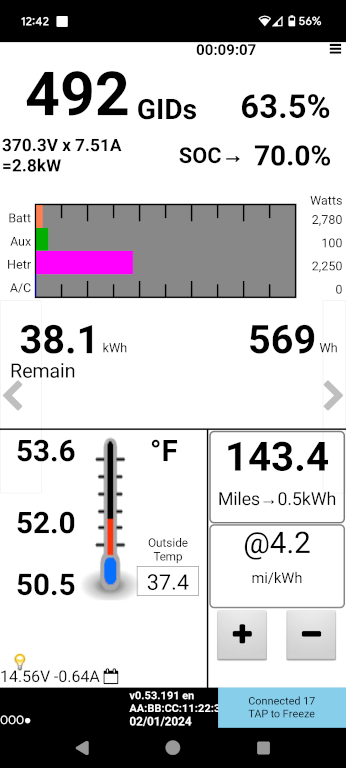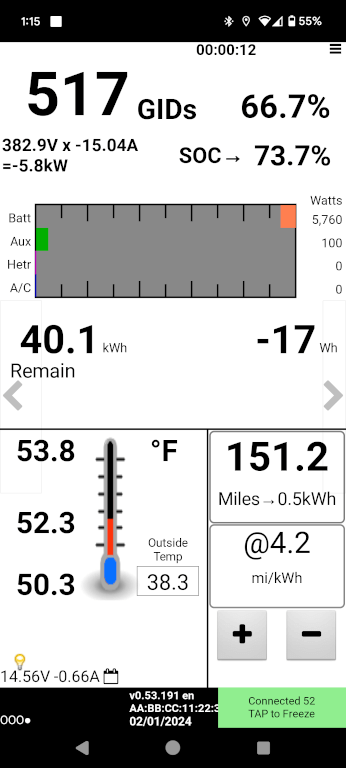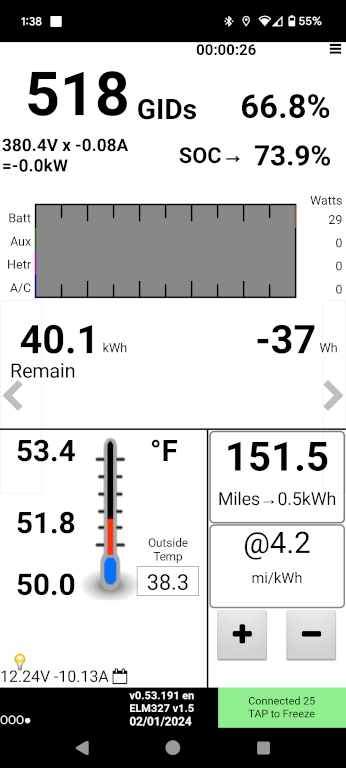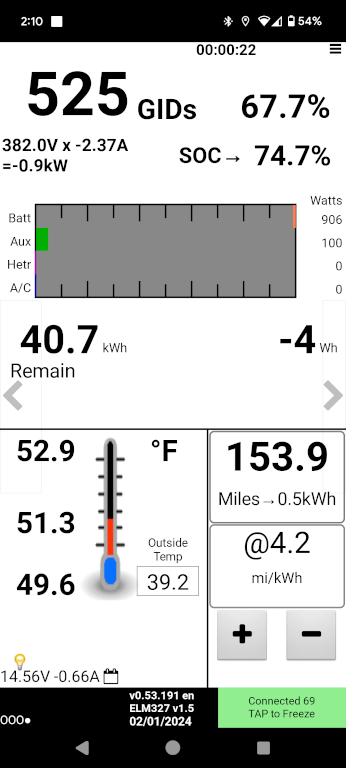Last night was another good, cold night to test with. First I started by lowering all the Leaf windows so that I could waste tons of energy via climate control. Outdoor temperatures were
28 F (-2.2 C)
Experiment #2:
I start by getting some battery temperature measurements.
Battery is still cooling, the sensors read
54.1 F (12.3 C),
52.6 F (11.4 C), and
51.0 F (10.6 C)
I begin by using the remote climate control activation by doing two of them back to back for 30 minutes of power wasting fun. Right before the last activation expires, I get a quick LeafSpy reading to see how much power this is wasting along with current battery temperatures. I can see that my Leaf is wasting about 2.8 kW doing this exercise and that the battery temperatures continue to fall. Sensor readings show
53.6 F (12 C),
52.0 F (11.1 C), and
50.5 F (10.3 C). The battery isn't cold enough to negate the net heat loss, but that's ok.
Next, I plug in my L2 EVSE. I let it charge for 30 minutes and then come back to get another LeafSpy reading. No surprise to me, the battery is starting to warm up again. Sensors now show
53.8 F (12.1 C),
52.3 F (11.3 C) and
50.3 F (10.2 C). I was a little puzzled that the sensor at the front of the Leaf showed a slight decrease in temperature, but I suppose it would be within the margin of error since the previous changes in decreasing temperature were a lot greater.
I wait about 15 minutes because I want to get another reading before I plug in my L1 EVSE. The battery is now starting to cool again after only a short time of disconnecting the L2 charging. The sensors show temperatures of
53.4 F (11.9 C),
51.8 F (11 C), and
50.0 F (10 C). Will my L1 EVSE be about to turn around the temperature falling like my L2 did?
Next, I plug in my L1 EVSE. It will charge at 12A @ 120V instead my 220V L2 charger. I let it charge for another 30 minutes and get a temperature reading. I was not surprised to see the temperature started to fall again, now the sensors are reading
52.9 F (11.6 C),
51.3 F (10.7 C), and
49.6 F (9.8 C). Seems my battery is too warm to gain heat from L1 charging, but that seems to be an expected behavior in this setup.
Conclusion:
I was kind of disappointed in my results for trying to replicate a "software" heating mode. The battery is behaving the way I would expect with how much power I am using versus how much power I am pushing back in. What I noticed is that trying to waste power using the climate control is not really as efficient as I thought it would be.
The first issue is that probably 99.999% of Leaf owners are not going to be leaving all their windows down in the middle of a brutally cold weather event. With all the windows up and the heat being set for re-circulate, the Leaf cabin is going to be warmed up within a few minutes of using only PTC heat. Afterwards, the power consumption is going to drop a lot. The default remote climate control temperate is
75F (23.9 C), which is probably warmer than most of us would normally use on a drive, but still easy to reach in a cabin within minutes. The power consumption would easily drop down to the sub -1 kW range and stay that way unless Nissan is over-riding this and setting some insane cabin temperature like
90F (32.2 C) I doubt Nissan would do this, so probably using the default.
That creates a second issue, this only works if you have a way to put power back into the battery. So the Leaf needs to be able to cycle out some battery power for heat and then push energy back in to help create more heat. This means a 62 kWh battery Leaf just left out in the cold by itself has no way to do this. So, what is it going to do then, just run the climate control forever until the battery is depleted?
Mux has pointed out in their earlier post above, via the math, you need to be putting it about 17A of power into the battery to break even at 0F battery temperature. So a 16A L2 could cover that for charging. Using power from the battery of the same amount would also have a break-even point at 0F, but that means you need to find a way to use nearly 6 kW of energy continuously. Even though in theory, the PTC can use 6 kW (plus the other loads that run the Leaf can further use more power), but trying to keep that PTC operating at 6 kW for cabin heating that long is probably not possible without melting the inside of the Leaf.
To make things more complicated, what if you are using a L1 EVSE? It's not going to have enough power to reverse the battery cooling. What if the battery is at a high SOC where you can't push in more power?
I'm wondering now if Nissan has coded the Leaf to activate when any sensor reaches a low enough temperature instead of all 3. This would mean I have a chance to trigger this by just cooling one of them at the front or back of the pack where it is more easily accessible.

If anyone has a video of some 62 kWh in "battery warming" action, I would be curious to see it.



